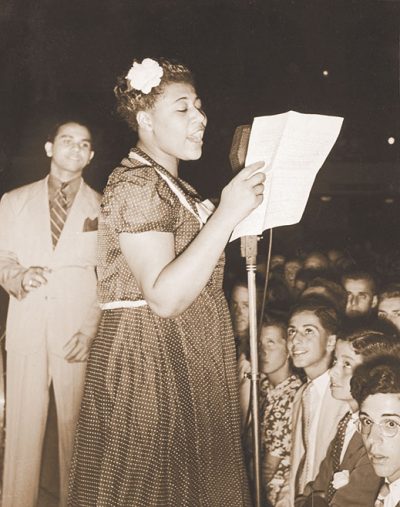
New Jersey doesn’t have a signature jazz sound like New Orleans or Kansas City, but the state is historically a center of jazz creativity and performance. Newark has long been the focal point. The scene blossomed in the 1930s, when neighborhood bars proliferated amid the city’s post-Prohibition boom in beer brewing. “We wound up with a tavern on every corner,” says jazz historian Barbara Kukla, author of America’s Music: Jazz in Newark. That meant plenty of gigs for local musical aspirants. “Everybody wanted to be a musician,” says Kukla.
Not everyone could become a star, but some did, including Newark-born vocalist Sarah Vaughan and saxophonist Wayne Shorter, and transplants like sax player James Moody and be-bop trumpeter Woody Shaw. Big-name artists like Duke Ellington and Lionel Hampton performed at the Adams Theatre, Laurel Garden, the Terrace Ballroom and other major Newark venues. Billie Holiday, says Kukla, could be heard at a neighborhood club like the Picadilly in 1946, and more than 10 years later at Sugar Hill on Broad Street. Charlie Parker (who recorded for Newark-based Savoy Records) and John Coltrane performed and hung out in places like Lloyd’s Manor. They were “huge influences” on the younger players, says Kukla. Among those younger players was Kenneth Gibson, the future Newark mayor who played sax in a band with Shorter.
Another vibrant scene heated up in the 1930s and ’40s in Asbury Park, where dozens of nightclubs lined Springwood Avenue, the main drag through the city’s predominantly African-American West Side. The clubs attracted local talent like Red Bank-born Count Basie, who, according to jazz historian Charlie Horner, played the Smile Awhile Inn and other joints as a teenager. Meanwhile, big-name artists like Ellington and Ella Fitzgerald played to mostly white crowds at Convention Hall and the Casino on the Asbury Park boardwalk—often slipping over to the West Side for late-night jam sessions.
Jazz spilled into Camden and other urban areas as well as popular suburban venues, like the Meadowbrook in Cedar Grove. The state’s jazz legacy continues today with resident artists like Christian McBride, Geri Allen, Nat Adderley and Dave Stryker, as well as vital jazz institutions, such as Newark-based radio station WBGO, NJPAC’s annual James Moody Jazz Festival, the Institute of Jazz Studies at Rutgers-Newark and the education foundation Jazz House Kids.



